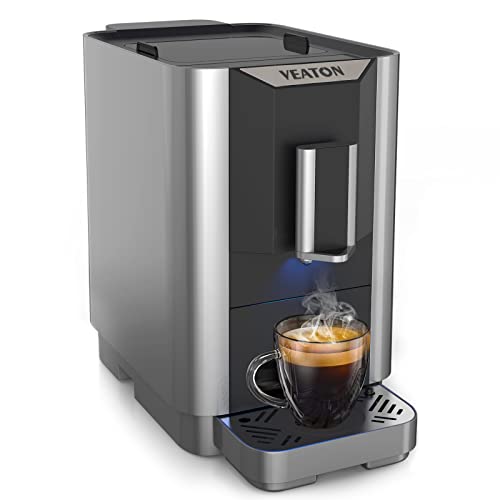How to Build a Professional Espresso Machine
For cafes and coffee shops looking to attract customers with an interest in barista and espresso skills, this is an excellent choice. It's the official barista machine for World Barista Championships and it really does show.
The barista is able to refill the water reservoir during their shift. The machine has hot water for tea and steam wands that cool-touch.
Water

A commercial espresso machine has to be able to make a huge amount of espresso-based drinks with efficiency. This is why they are usually constructed of stainless steel, which is more durable and resistant to scratches and break. These espresso machines are easier to maintain and clean.
Finally, a high-quality machine has a shut-off valve for the water line, to prevent limescale build up. This will ensure any repairs are only limited to the affected components of the machine and won't affect the operation of the rest.
Test your water to ensure it is treated properly. You can remineralize distilled water by adding some minerals. It can enhance the taste and lessen its erosive qualities, but could also cause damage to certain machines. This is because the remineralized fluid will cause the boiler sensor to think that the machine is fully stocked, but it is not. espresso machines uk could cause excessive heat and damage to the machine.
Grinder
The grinder is an essential component of a successful coffee maker. The grinder transforms an unground, raw coffee bean into a finely -ground coffee that can be tamped properly into the filter basket for the best extraction.
Commercial-grade professional machines include grinders that are programmed for various sizes of drinks. This guarantees consistency in results each time. Super-automatic machines go further and automate the entire process from brewing through grinding and dispensing. These types of machines tend to earn high marks in Lab tests due to their hands-off user-friendliness.
A semi-automatic or manual espresso machine requires more involvement from the barista, however the quality of the end result is often worth the effort. This model was awarded the 2022 Good Housekeeping Coffee Award for its clever dosing feature that weighs and dispensing the right amount of ground coffee each time. It also has a low-pressure pre-infusion mechanism for balanced extraction and the milk frothing wand, which was a success in our test for producing rich, thick steamed milk.
Temperature
When it is about espresso temperature, it plays a significant role in the taste and quality of your coffee. If the water isn't at its ideal temperature, it may hinder extraction and even cause a bitter cup of coffee.
Luckily, the best espresso machines include tools that allow you to ensure that your water is at the right temperature. One method for doing this is to use PIDs, which monitors and adjusts the temperature of the water. Double boiler systems are another method to achieve this. This lets you use a single boiler to tea and steam, while the other heats water to brewing temperatures.
Carles points out that these kinds of systems can be beneficial for large-scale businesses as well as home baristas. They can help novices to dial in the perfect espresso because they can maintain an exact temperature while avoiding various variables that can alter the flavor quality. It also makes it easier for baristas with experience to get their shots exactly as they would like them.
Pressure
The pressure that an espresso machine is using can affect the quality of the coffee it produces. Many espresso drinkers notice that their drinks taste different based on the amount of pressure they use, even if all other factors remain the same.
The majority of commercial machines utilize 9 bars of pressure to make espresso. They also tend to be driven by pumps rather than steam-driven. While higher-pressure machines exist however, they typically require a more complicated group head design to take on the higher pressures.
While you may see espresso machines that advertise 15 or even 18 bars of pressure, nine bars is generally considered the gold standard for making consistently great brews. These machines with higher pressures are generally cheaper and intended to be used at home.
In comparison, 9 bars of pressure is four times higher than the pressure that is exerted by your car tire. The greater the pressure a professional espresso maker is able to apply, then the more effective it is at separating flavor from the coffee beans you love. It's worth investing in a high-end machine that will deliver the best results.
Barista Skills
Baristas must be able to take and process customer orders quickly and efficiently. This is especially important during busy times in the coffee shop. Effective customer service skills are essential for building relationships with customers and boosting the sales of the coffee shop. This could include recognizing regular customers, working efficiently to resolve problems and staying positive and friendly even in difficult situations.
A strong ability to multitask is a must for baristas as they may be required to take orders, operate the cash register, communicate orders to coworkers and handle phone calls simultaneously. This skill allows the customer to enjoy a pleasant experience in the cafe by making sure that orders are delivered promptly.
It is vital for a barista's knowledge to be able to make different drinks with an espresso machine. This can be learned by reading up on the different types of coffee, attempting them out in person, or watching videos online. Many baristas find it helpful to attend classes provided by various organizations.
